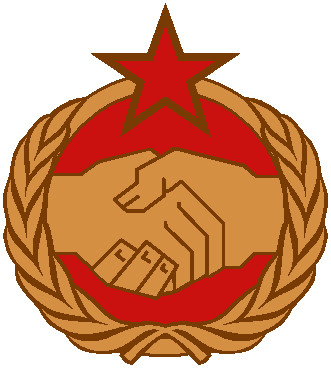No amount of managerial reform or incentives will bring Soviet yields up to U.S. levels because the climate and geography of the Soviet Union will not permit it. Nevertheless, contrary to the implications of Western critics the steady increase in Soviet yields has been quite respectable (Shaffer 1990:4 and Table I). On a sown area which was roughly the same (218 vs. 216 million hectares) Soviet output during the 10th plan (1976–1980) was some 48% larger than that of the 7th (1961–1965)(NKhSSSR V 1963:242;NKhSSSR V 1980:224).
This increase is largely a result of a tripling of fertilizer application and an almost two‐fold expansion of the irrigated land area (NKhSSSR V 1980:238,240) (For 1986–90 output was up another 16% on 210 million hectares, RSEEA 1991a:8). These results suggest that over time additional investment and improvement of farm administration and practice can produce increases in output within a socialist system.
Even with additional investment, geography and climate will always make Soviet agricultural performance volatile. Up until 1963 the expansion of Soviet output came primarily via an expansion of the sown area. Between 1950 and 1963, sown area increased by 49%. But that meant expansion into more marginal geographical and climatic areas. Since that time the sown area has remained rather stable, and because of the marginal character of new lands, levels of output have been more volatile.
Since 1965, increases in output have come from ever higher levels of investment and material inputs, much of which attempts to compensate for the marginal character of the land. Inputs into agriculture in 1977 were up 75% over that of 1950, but output was up 145% (Diamond and Davis 1979:20). Regardless of Western perceptions, in the 1970’s the combined productivity of the resources devoted to agriculture averaged more than a third greater than in 1950 (Diamond and Davis 1979:20).
[…]
Tsarist Russia was a net exporter of grain (NKhSSSR V 1969:669). The Soviet Union of the 1980’s is a large net importer of grain (Laird 1990:11; Buck and Cole 1987:74). The Soviet Union apparently has forfeited its agricultural self‐sufficiency. Therefore, in the view of Western critics, this shows that socialist types of agriculture are clearly less capable of meeting national food and fiber requirements than are capitalist types.
An economic system is not inefficient because it imports. The European Community (EC‐12) in 1987, for example, was a net importer of some $25.8 billion (Commission of the European Community 1990:T/139) of agricultural products, i.e., almost double the $12.9 billion (USDA 1989:40,42) of net Soviet agricultural imports.
Even when the larger population of the EC is discounted, the net per capita agricultural imports of the EC exceeded those of the USSR by over 75%. One can’t simply conclude from this that the small capitalist family farms of Western Europe are less efficient than the large socialist farms of the USSR.
Similarly the fact that during the pre‐WW II period, as well as over the course of 1950–1960 (Statistical Abstract of the U.S. 1960:885) and during 1968 and 1969 (Statistical Abstract of the U.S. 1970:781) the U.S. was a net importer of food and live animals does not prove, by itself, that U.S. agriculture was inefficient. Nor do the facts that the U.S. is the world’s largest importer of meat and currently a large net importer of vegetables, fruits and fish (Statistical Abstract of the U.S. 1988), prove that U.S. agribusiness is a failure.
Imports are also not good indicators of the overall productive capacity of an economy. The Soviet Union has a big agricultural economy. In 1989, for example, it had more cattle, hogs and sheep and produced more wheat, rye, oats, barley, cotton, potatoes, sugar, wool, milk, butter, eggs and fish (among many other products) than the U.S. (USDA 1991). Imports only reflect an economy’s relative resource endowments and productive capacities.
Soviet agricultural imports have changed significantly over the course of the past two decades. During the period 1956–1970 the USSR was a net exporter of grain, exporting (net) an average of 3.5 million tons per year (Goldich 1979:144). From 1970 onward it became a progressively heavier importer. Net grain imports rose from an average of 9.88 million tons per year over the period 1970–1974 to 20.52 million during the period 1975–1979, to 30.88 in 1980–1984 and to 32.1 million tons during the four year period 1985 1988 (USDA 1989:49). Prior to 1970 Soviet net meat imports were small but by 1990 they were approaching U.S. levels.
These rising imports of grain and meat were not triggered, as one might be inclined to infer, from declining production. Grain production rose from an average 181.6 million tons in 1971–75 to an average 206.9 million in 1986–89. Meat production rose from 14.0 million tons in 1971–75 to 19.2 million tons in 1986–89, i.e., a 37 percent increase. The imports were triggered by the rising demand for meat which accompanied rather sharp increases in income.
Per capita consumption of meat, rose from 47.5 kg per capita in 1970 to 67 in 1989 (NKhSSSR V 1980:201–202 and V 1989: 118). In a very approximate fashion, the 5.2 million extra tons of meat produced in 1986–89 over and above the 1971–75 level required approximately 50 million tons of grain for feed, 25 million of which have come from domestic production and some 25 from additional imports. Since the increase in grain output and imports has not been sufficient to cope with the increasing requirements for domestic meat production, meat imports were increased.
Good read, thank you comrade!


